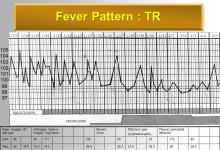Marketing 101 Save

Few rheumatologists have the luxury of limiting their practice focus to one or few of the 110+ rheumatic diseases. Those colleagues that do usually have a unique support position that allows them to only see one disorder (i.e., PsA) or one type of disorder (i.e., vasculitis). God bless them. We need them, but pardon my envy of those with such regal rheumatologic roles.
The rest of us just “go to clinic” and deal with whatever comes. On one hand, it's challenging and cool to don the white coat and start your day not knowing whether you’ll be seeing inflammatory arthritis, gout, or lupus, or newly diagnose a few with PMR, RS3PE, CREST and B27 related juvenile enthesitis. More impressive when you find a myelodysplasia with polyarthritis, myeloma masquerading as PMR or septic oligoarthritis related to Mycobacterium bovis.
Yet the volume of patients we see are less exciting than desired and many new consults are either idiotic, mundane or rooted in overt deficits in lab testing or basic clinical skills. So, you have to merrily wade through a day of referrals that query the rheumatologic significance of mystical myalgias, intermittent fevers (of 99F?), classic osteoarthritic hands or the perplexing positive ANA.
There are unrecognized trade-offs to the way you practice and what kind of patients you see. If you had to see 10 OA patients to find one lupus and one gout - would you? Would you rather care for one severe progressive systemic sclerosis patient (with lung, GI, renal involvement) or 10 fibromyalgia patients? Which is more dicey - taking care of your best friend's neighbor's wife who has severe recalcitrant, seropositive, erosive rheumatoid arthritis or a VIP referred to you by an esteemed colleague who insists he has Lyme disease when you know he does not?
I’ve recognized most of us wish our practice mix was different, but none of us do anything to change how or why this happens. The solution is easily stated: define who you want to see; establish processes to ensure this; and advertise your preference or expertise to your referral base or region. Why, then, doesn’t this happen?
Several years ago, I was very involved in education on “early rheumatoid arthritis” - its diagnosis and the importance of early and aggressive intervention. The concept of early diagnosis and aggressive management has become the mantra for most rheumatologists. Every rheumatologist agrees that early RA, new-onset inflammatory oligo- or polyarthritis should be seen immediately by the rheumatologist. All volunteer that they would take phone call referrals, squeeze in the patient over lunch or after hours and do whatever is necessary to accommodate such a patient.
The problem is there are maybe 75,000 new RA patients per year. Which means that every practicing rheumatologist need only take in between 20-25 new RA patients per year. Hence, reasons to establish an “early arthritis” clinic were many and compelling but were usually negated by the economics of changing the practice to facilitate the intake of these new “ideal” patients. Almost no one had ever engaged in a marketing plan that informed their colleagues of what and who should be seen or how to easily get a rheumatologic consult. Nearly all relayed stories of getting urgent phone calls from the PCP over a hot new arthritis, lupus or vasculitis patient and how they easily accommodated such calls. But on further review, most admitted that their PCP friends were more likely to call about a polysymptomatic FM patient (that they thought was RA) than someone with a really swollen joint.
When we started our own “Early Arthritis Clinic”, we sent letters to all of the PCPs, internists, FPs, Orthopedists, OB GYNs and physiatrists on campus with a short letter stating the importance of early diagnosis and treatment and that we had just such a clinic to help accommodate such patients. Moreover, we provided a 5x7” pad of tear-off referral sheets that only required the patient's name, contact information, the referring doctor's name and fax number, and a list of check-box diagnoses or lab abnormalities for which the patient was being referred. Lastly, the bottom of the page stated (in small, italicized print) please, “Fax this form, with a recent note, lab and X-ray results”. Amazingly over 80% of all consults came with labs, X-rays and referral MD notes!
The Take Home Message
There are not enough rheumatologists to care for the 57 million people with arthritis in the years to come. Rheumatologists are specially trained to manage common and uncommon disorders, many of which are complex and difficult to treat. While I believe that the majority of us should be generalists, capable of diagnosing spondyloarthritis, injecting a wrist and doing a 28 joint count, most of us would be better at our jobs and serve our communities better by marketing ourselves. This means that you should consider the following marketing measures:
- Send practice announcements: about your new practice, relocated practice or new partner additions to your regional, institutional or system physicians and relevant referral providers. Be sure to include pictures, credentials, bulleted proclamations, maps, etc. (visuals are impactful).
- Send letters to colleagues: about what you want to see and why you're the expert in that area (training, research, large similar patient base). It's also important to state what you won’t or don't see - but be careful - if you list more than 2-3 such diagnoses you risk being labeled as arrogant and elitist subspecialist who is unlikely get any consults - ever.
- Make yourself the expert: Write for the local newspaper, beef up your online presence with a blog or add an “ask the doctor” section on your own website. Volunteer to do Grand Rounds at your center and talk about who you want to care for and how they can easily be referred. Regularly send education materials to your referral base - “Good Rheum News” from Dr. Smartypants. I send a copy of my RheumaKnowlegy card (available at Rheumaknowledgy.com) as a handy pocket reference to the doctors in my system.
- Use Social Media to Promote Yourself: with either your peers, colleagues or patients. Take a look at Twitter and my @RheumNow account. I started using Twitter a few years ago with the purpose of doing one tweet (140 characters) a day that would essentially be the answer to a test question. Three year later, I’m doing 3 tweets a day (total of 2200+) and have 2180 followers. You can do the same for your patients - “arthritis tip of the day” and encourage them to follow you on Twitter or Facebook.
- Become Famous: hire a media consultant, stylist, publicist, social media consultant or go to charm school. Get your own radio show on sunday morning. Write a blog, turn your blog into an online book, self-publish on Amazon.com
If you wish your practice mix was different, what are you doing about it?











If you are a health practitioner, you may Login/Register to comment.
Due to the nature of these comment forums, only health practitioners are allowed to comment at this time.